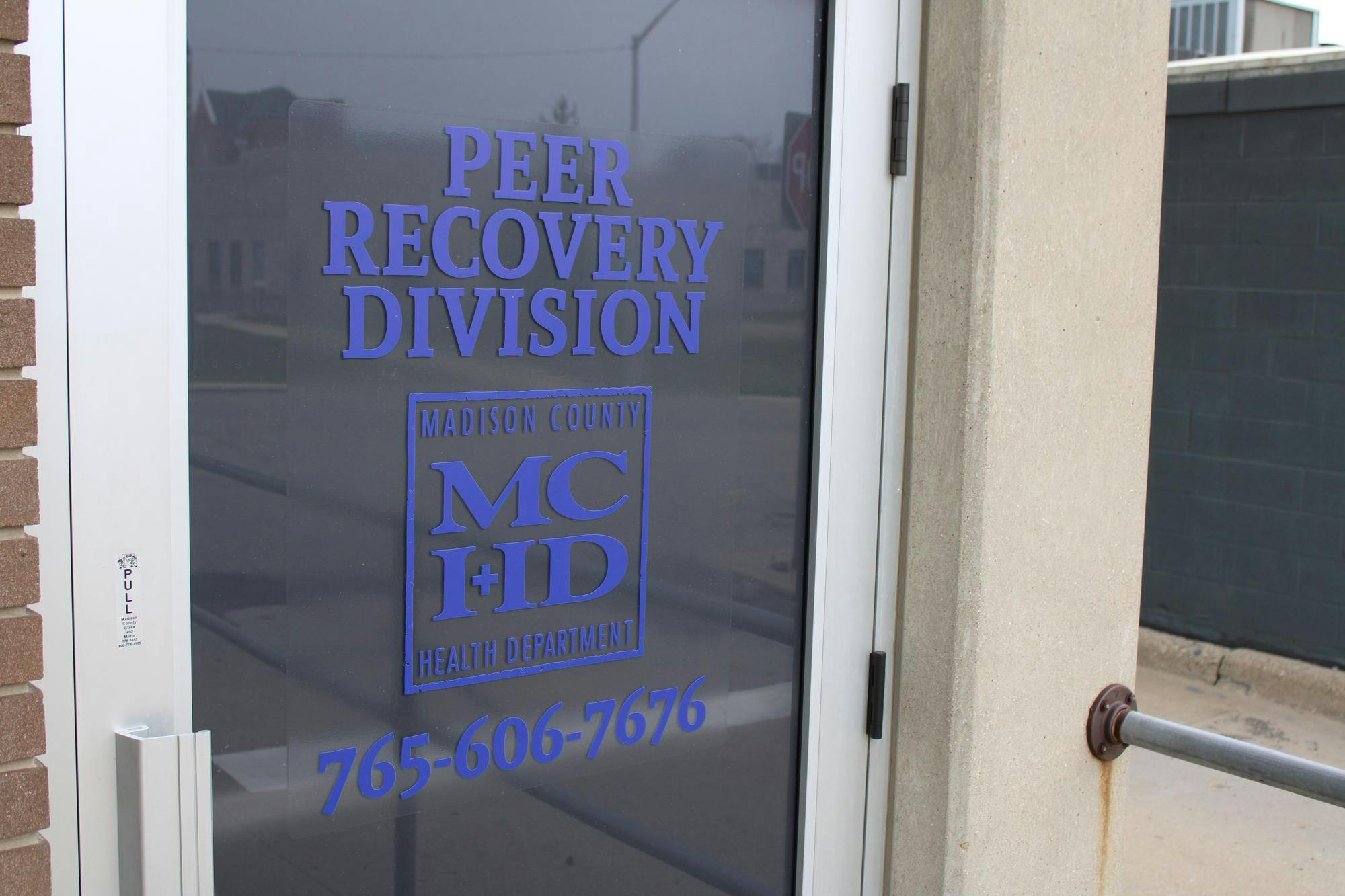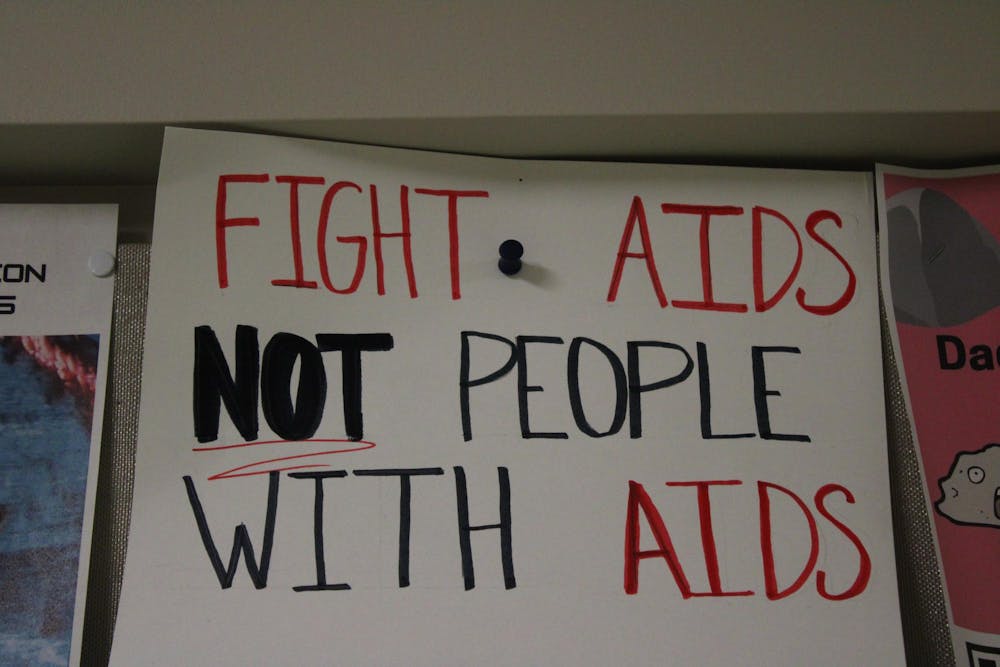This article is published as part of a collaborative effort by students in the School of Journalism and Strategic Communication at Ball State University and the Ball State Daily News. Produced in a classroom setting under faculty guidance, the initiative aims to provide hands-on experience while informing the public through responsible, student-driven journalism.
A short drive’s north of the Louisville metropolitan area lies Scott County. It lived as an obscure pocket of southern Indiana for much of its existence, housing a community of a little more than 24,000 residents, according to Census data. The arrival of the fall of 2014, however, elevated the sparsely populated rural county to national public-health infamy. Scott County sharply rose to become a hotspot for a devastating HIV outbreak.
NPR reported that 235 Scott County residents were infected with HIV during the outbreak’s peak in late 2014 and 2015, and the crisis remains as the worst in Indiana history and among the worst to ever strike rural America.
Intravenous drug use—and its accompanying needle reuse—was the primary driving force behind HIV’s rapid spread in Scott County, leading those in power to adopt a countermeasure that had never previously been implemented in Indiana: a syringe exchange program. Then-Indiana Gov. Mike Pence passed an executive order approving the plan in early 2015, and though the original order only allowed the program to operate for 30 days, both chambers of the Indiana General Assembly passed a bill in April 2015 that established Syringe Service Programs (SSPs) as a permanent piece of the state’s harm-reduction crusade.
Today, eight Indiana counties operate SSPs, which allow “qualified entities” — organizations ranging from local health departments to nonprofit groups working alongside government agencies—to safely collect used needles and distribute unused needles to those with substance abuse disorders.
Delaware County is not among those working within the program’s confines, though neighboring Madison County is one of the eight locales.

Jean Marie Place, a Ball State University professor of health science and the director of community research for the Addictions Coalition of Delaware County (ACDC), argues that just eight of the state’s 92 counties having life-saving remedies available to their residents is both unfair and impractical. She recalls a conversation with Neil Kring, a local pastor and advocate for those with substance abuse disorder, that she feels highlights the flaws rooted in the current SSP framework.
“Neil was telling me that he wants to encourage Delaware County folks to go down to Madison County and get the clean syringes, but in doing so, he's really putting them at great risk, because if they're caught in a car, if they're caught for a light that's gone out, and then the officer finds syringes in their car, it’s a Level 6 felony to have drug paraphernalia,” Place said. “It's like ‘Yes, go and get clean syringes, but if you bring them back into Delaware County and you get caught, you could be charged with these serious crimes.’”
Those charged with a Level 6 felony—the crime associated with the possession of drug paraphernalia—in Indiana can face a prison sentence spanning from six months to two-and-a-half years and may be fined up to $10,000 (IC 35-50-2-7).
SSPs remain in a limiting, jurisdiction-by-jurisdiction limbo because of the legislation that underlies them. According to its listing in Indiana Code (IC 16-41-7.5), SSPs must only be administered if a public-health emergency has been declared in a given county or city, or a local government body has approved a program to be implemented.
Per a 2023 report from the Indiana Department of Health, Delaware County saw the 9th most new Hepatitis C cases (82) in 2022 of any Indiana county and had the 17th most residents living with HIV in the state (150). Noting these figures, which have long been dire in the area, Place and her ACDC team advocated strongly in 2019 for Delaware County to establish an SSP to curb the spread of communicable disease through needle reuse.
Dane Minnick, a former Ball State social professor, worked closely with Place and the ACDC team to spearhead the effort to bring what he considers an effective harm-reduction response to Delaware County’s health landscape.
“We were really nervous that there was a really high prevalence of Hepatitis C, and there was potential for another outbreak of HIV just based off the data that we were looking at,” Minnick said.

Their efforts were unsuccessful though, as she and her team faced strong resistance from local officials, especially those in the Delaware County Prosecutor's Office, a unit who was consulted in the approval process. Minnick recalls their plan being received with great distaste by local prosecutors, who expressed their opposition from the outset of their introduction to the plan.
“The prosecutor would not even look at the proposal that we presented and had said that the issue was dead and that he had already killed it,” Minnick said.
Despite her team’s defeat in attempting to provide unused needles to Delaware County residents and push for statewide expansion, Place remains determined to advocate for harm-reduction programs, which she does through statistics-based advocacy.
“We know the evidence,” Place said. “The evidence is that people who participate in safe-syringe programs are five times as likely to be successful in treatment.”
According to a 2010 study in The Lancet, a peer-reviewed medical journal, the implementation of SSPs as a part of a public-health response reduced the risk of HIV’s spread by nearly 50%. This reduction in the disease’s prevalence provides large-scale economic benefits for communities where intravenous drug use is especially common. The healthcare costs to treat a single HIV patient across their lifetime are estimated to surpass $500,000, per a study in the
Journal of Acquired Immune Deficiency Syndrome.
And while there exists concrete research behind the SSP’s efficacy and economic benefits, Place said the softer, human side of the story is also one that cannot be ignored.
“It's a long game that you're playing,” Place said. “It's not like you give a safe syringe and the next moment they call a treatment center, because it's a process of getting them to care about themselves. Seeking out an unused needle is an act of self care. It's saying ‘I care enough about myself to try to prevent disease,’ and so that's the first step.
“The next act of self care is maybe I'm going to go back and get another needle next week, and as they do that week after week, they're forming a relationship with the folks who are offering the needles. Those folks have opportunities to promote recovery and promote treatment. If you allow that process to take place, it does tend to work.”
Advocacy for SSP expansion was exemplified in the statehouse this session, as Sen. J.D. Ford, a Democrat representing a district in the Indianapolis area, authored a bill that would allow the U.S. Department of Veteran Affairs to take part in the program. Though Place is pleased with some movement toward bringing the program to a larger, more equitable scale, she said further public education is needed to see greater change.
“I think you have to trust the experts,” Place said. “We don't know everything, but follow what the experts are saying and be a critical thinker about that. I think it really is important to have a basic trust in science.”
Place said she faces a number of critiques of broadening SSP access in Indiana, many of which are rooted in religion. A person of faith herself, she said that acknowledging the need for SSPs should not conflict with personal beliefs and should be rooted solely in science. Place also pointed to Dr. William Cook’s book covering the Scott County epidemic, “Canary in the Coal Mine,” as her favorite case for the reconciliation of religion and harm reduction.
“I just find that these are my religious views and these are my professional views, and they don't necessarily have to be at odds with each other, and in fact, I think I so enjoyed William Cook's book because he integrates it so seamlessly. He's like, ‘Look, not only do they not have to be opposed, but it can actually work perfectly together.’”
While field experts like Place and Minnick remain in favor of SSPs emerging in every county across the state and some statements are being made in Indianapolis, a cautious outlook exists in the Indiana public health community.
“I just don't know that there is enough general knowledge and a willingness to take a public-health approach with where we're at right now as a society,” Minnick said. “I think that a lot of counties will continue to use this as an emergency tool, which is unfortunate because a lot of people will suffer from taking that approach. There's not enough of an emphasis on a public-health approach right now.”
Christina Doll, an associate professor in Ball State University’s Department of Nutrition and Health Science, underscored the importance of finding solutions that place the interests and input of those directly involved in the crisis at the forefront. Place expressed a similar sentiment, adding that there are many stakeholder-centered opportunities for Delaware County residents to assist in addiction support. She is especially fond of the work done at the Recovery Cafe, a Muncie restaurant devoted to serving the needs of those with substance abuse disorders.
“You get directly in touch with people who have that lived experience,” Place said. “They'll teach you, and they'll humble you. Listen to them and be moved by their experiences.”
Though Place believes inequities linger in Indiana’s SSP framework, she is confident in the potential for reforming the program, so fewer Hoosier communities are devastated as Scott County was a decade ago.
“I think in terms of advocating for this, it's not that I think it's impossible,” Place said. “Keep talking to people about it. If someone says something stigmatizing about a person who used drugs, counter it. I think you can move them into interventions that may work, and one of them is the safe syringe program.”
Contact the Ball State Daily News via email at editor@bsudailynews.com.





